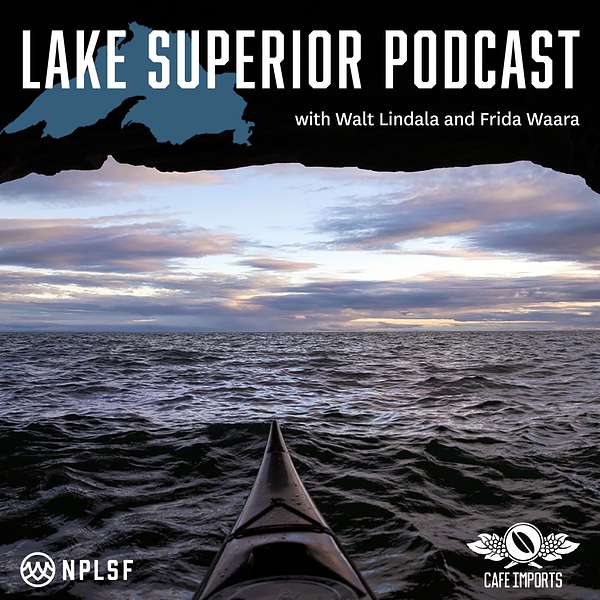
Lake Superior Podcast
We are made stronger by story and there’s no better source than the continent's largest body of freshwater, Lake Superior. Join hosts Walt Lindala and Frida Waara as they highlight the five National Parks that ring this Greatest of the Great Lakes - meeting the people, touring the places and learning about the projects that make these parks and body of water so remarkable.
Join our podcast community! Please share your own stories, comments and podcast episode suggestions (www.nplsf.org/community).
Brought to you by The National Parks of Lake Superior Foundation (www.nplsf.org).
Theme song: King Whirl by David Huckfelt (www.davidhuckfelt.com).
Photo Credit: David Guttenfelder.
Podcast sponsored by Café Imports, a Minneapolis-based importers of fine, specialty green coffees.
Lake Superior Podcast
S5 E12: Capturing the Magic of The Northern Lights: An Interview with Ogetay Kayali
Witnessing the Northern Lights checks a bucket-list for many. The first time you see the sky erupt in waves of pulsing white, green, red, or even blue light makes lifelong memories. In this episode of the Lake Superior Podcast, Walt Lindala and Frida Waara talk with Astrophysics Graduate Student Ogetay Kayali from Michigan Technological University in Houghton, Michigan. Ogetay shares not only why we seem to be experiencing the Northern Lights more frequently, but also how to better take advantage of the experience with our cameras.
Key Takeaways:
- The northern lights are at their peak due to the solar maximum, a phenomenon that happens every 11 years, increasing the likelihood of bright auroras.
- The colors in the northern lights, ranging from green to red and purple, are caused by the interaction of solar particles with oxygen and nitrogen in the Earth's atmosphere.
- With advances in technology, it's easier than ever to capture the auroras on cameras, even smartphones, though understanding camera settings like ISO and exposure can enhance the quality of your photos.
- Dark skies are critical for viewing the northern lights, and the Lake Superior region offers excellent vantage points for experiencing this natural wonder away from city lights.
- The best time to see the lights is during winter months with longer nights, and checking the moon's phase can also help—new moons provide the darkest skies for optimal viewing.
Quotes:
- "We are currently at solar maximum, so we are expecting lots of solar storms that hit the Earth and cause northern lights. That's pretty normal. Every 11 years that happens" – Ogetay Kayali
- "If you have a camera, first try to learn using it. If you have a mobile camera, go to the darkest place you can and use long exposures to collect more light." – Ogetay Kayali
- "Take that chance, even when the forecast looks cloudy...you've got to try it." – Ogetay Kayali
Resources:
- For daily astronomical insights and stunning celestial images, visit NASA’s Astronomy Picture of the Day (apod.nasa.gov/apod/astropix.html).
- To learn more about designated dark sky parks and optimal stargazing locations, visit Dark Sky Parks near Lake Superior (https://darksky.org/places/keweenaw-michigan-dark-sky-park/).
- For more information about NPLSF, visit National Parks of Lake Superior Foundation (nplsf.org)
Don’t miss this captivating episode as Ogatai Kayali, an astrophysics graduate student, explains the science behind the Northern Lights and why we’ve been seeing them more frequently along Lake Superior. Tune in for an in-depth look at the solar cycles, photography tips, and how Lake Superior’s dark skies provide some of the best stargazing opportunities in the world.